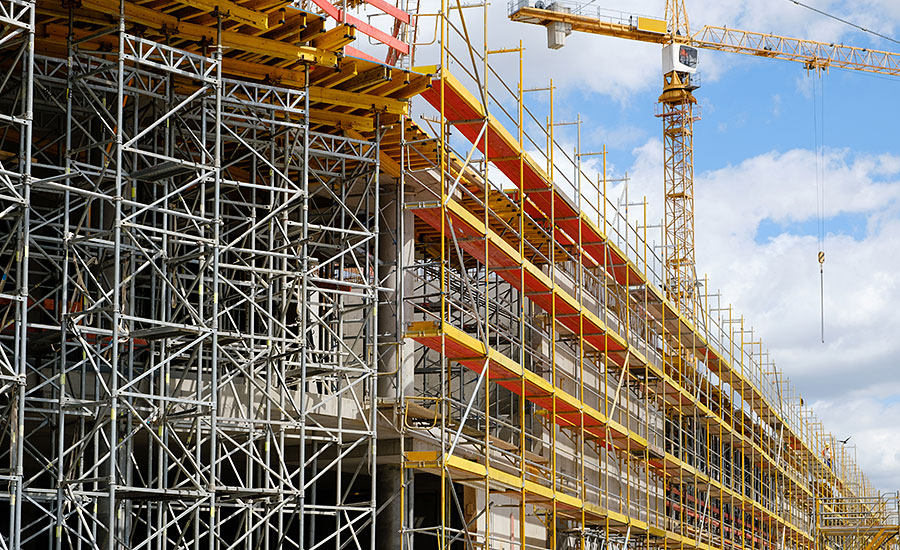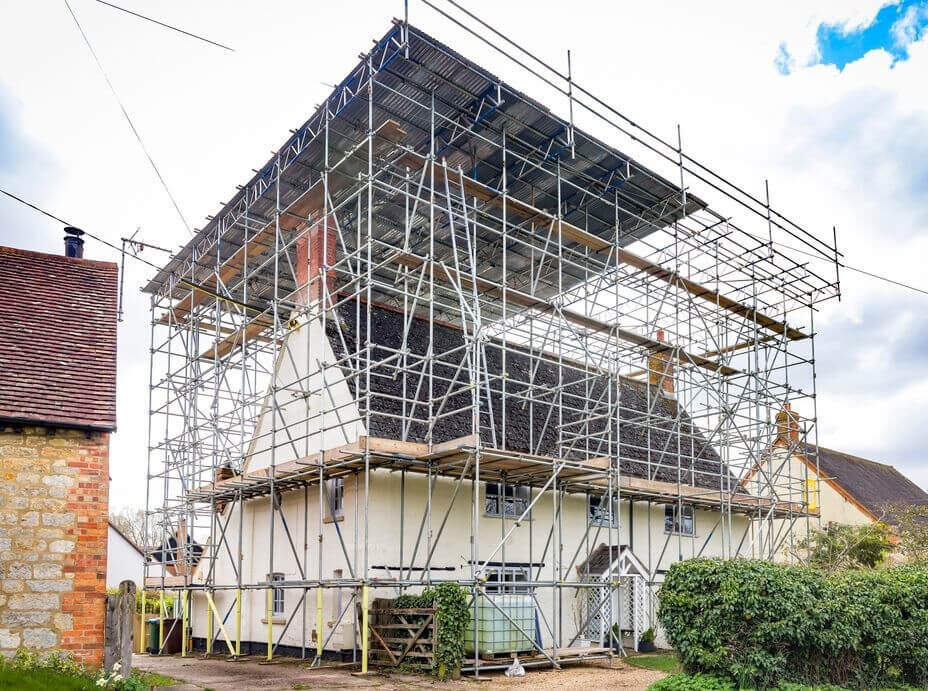Professional Scaffolder Surrey: Your Trusted Partner for Safe Installations
Professional Scaffolder Surrey: Your Trusted Partner for Safe Installations
Blog Article
A Comprehensive Overview to the Essential Features of Scaffolding in Modern Construction
The landscape of modern construction progressively depends on effective scaffolding systems that prioritize effectiveness, advancement, and safety and security. As projects expand in complexity, recognizing the necessary attributes of scaffolding ends up being vital for making sure worker security and maximizing task timelines.
Kinds Of Scaffolding
Although scaffolding systems can differ widely in layout and application, they typically fall into several distinct categories that satisfy various construction demands - Scaffolding. The most typical kinds include supported scaffolding, suspended scaffolding, and rolling scaffolding
Supported scaffolding contains platforms supported by a framework of posts, which offer a raised and secure working surface. This type is usually used for jobs that need substantial altitude, such as bricklaying or outside paint.
Suspended scaffolding, conversely, is utilized for projects requiring access to high elevations, such as cleansing or fixing building facades. This system hangs from another framework or a rooftop, permitting employees to lower or elevate the platform as required.
Moving scaffolding functions wheels that allow for simple movement across a job website. It is specifically beneficial for tasks that require constant relocation, such as interior operate in large areas.
Each kind of scaffolding is designed with certain applications in mind, ensuring that construction tasks can be performed successfully and successfully. Understanding these categories is essential for choosing the appropriate scaffolding system to fulfill both project requirements and site conditions.
Key Security Functions
Safety and security is critical in scaffolding systems, as the possible risks associated with functioning at heights can result in serious accidents otherwise effectively taken care of. Secret security attributes are essential to make certain the well-being of employees and the integrity of the building site.
Primarily, guardrails are important. These barriers provide a physical protect versus falls, dramatically decreasing the threat of severe injuries. Additionally, toe boards are typically made use of to stop tools and products from diminishing the scaffold, safeguarding workers below.
One more important element is using non-slip surface areas on systems. This function enhances grip, specifically in adverse climate conditions, thus lessening the possibility of slides and drops. Moreover, accessibility ladders must be firmly positioned to promote risk-free entry and exit from the scaffold.
Regular examinations and maintenance of scaffolding systems are also crucial. These evaluations ensure that all elements remain in excellent condition and working properly, dealing with any type of wear or damage promptly.
Last but not least, appropriate training for all employees involved in scaffolding procedures is necessary to make sure that they recognize safety methods and can recognize prospective risks. Scaffolding. Collectively, these features create a more secure working atmosphere and dramatically minimize dangers related to scaffolding
Material Technologies
Innovations in material scientific research have actually considerably affected the scaffolding market, improving both security and effectiveness in contemporary building and construction. The intro of high-strength steel and aluminum alloys has transformed typical scaffolding systems.
Furthermore, ingenious composite products, such as fiberglass-reinforced plastics, have actually emerged as viable options. These materials are immune to rust and environmental degradation, therefore extending the life expectancy of scaffolding systems, especially in rough weather. Using such materials adds to lower upkeep expenses and makes certain regular performance over time.


Layout Considerations
Considering the complexities of modern construction projects, reliable scaffolding style is paramount to making certain both functionality and security. Layout considerations have to include various elements, including tons capability, elevation, and the certain requirements of the building and construction website. Each task offers unique challenges, demanding a versatile technique to scaffolding systems that can adapt to varying conditions.
Architectural honesty is important; for that reason, engineers need to calculate the lots that the scaffolding will support, consisting of workers, materials, and equipment. The selection of products plays an essential role in guaranteeing the scaffolding can withstand these tons while staying long lasting and light-weight. Additionally, the design has to enable easy accessibility and egress, helping with the smooth movement of products and workers.
Safety attributes, such as guardrails and non-slip surface areas, need to be integrated to reduce threats of mishaps. Moreover, the design should think about the surrounding setting, including potential dangers and adjacent structures. By resolving these style considerations, building companies can boost the performance of scaffolding systems and advertise a much safer working setting, ultimately adding to the total success of the task.
Maintenance and Examinations
The effectiveness of scaffolding systems prolongs past first layout and application; recurring upkeep and normal examinations are essential to guaranteeing their continued efficiency and safety and security throughout the duration of a task. Routine assessments should be performed by certified workers to recognize any type of indications of wear, damage, or instability that could jeopardize the stability of the scaffolding.
Upkeep procedures must include regular checks of structural parts, such as structures, slabs, and fittings, making sure that all components stay safe and secure and totally free from deterioration or various other wear and tear. Furthermore, the performance of security features, such as guardrails and toe boards, need to be evaluated to make sure conformity with safety scaffold outrigger set laws.
Documents of all examinations and upkeep tasks is critical for liability and governing compliance. A systematic technique to record-keeping not only help in tracking the problem of the scaffolding however likewise supplies necessary evidence in the event of an event.
Inevitably, establishing a detailed maintenance and inspection routine will significantly lower the danger of mishaps and boost the overall safety of the building website. By prioritizing these methods, building managers can protect employees and maintain the task's integrity.

Conclusion
To conclude, the essential attributes of scaffolding in contemporary building include a range of crucial components, consisting of varied kinds, essential safety and security devices, product developments, and thoughtful design considerations. Highlighting security via guardrails and non-slip surfaces, along with innovations in materials like high-strength steel, improves both performance and sustainability. In addition, regular upkeep and examinations are vital for ensuring architectural stability and safety and security on building sites, ultimately helping with efficient task implementation and promoting the well-being of employees.
The landscape of modern building significantly relies on reliable scaffolding systems that prioritize technology, safety and security, and efficiency.Advancements in material science have actually dramatically affected the scaffolding industry, boosting both safety and security and effectiveness in modern building. Overall, these product advancements not only enhance the efficiency and safety and security of scaffolding systems but from this source additionally line up with the sector's press in the direction of sustainability, as several modern-day materials are developed to be much more ecologically pleasant.
Thinking about the complexities of modern-day building jobs, reliable scaffolding style is vital to guaranteeing both capability and safety.In conclusion, the vital attributes of scaffolding in modern-day building and construction incorporate a range of vital components, including diverse types, crucial safety mechanisms, material technologies, and thoughtful layout factors to consider.
Report this page